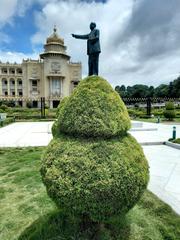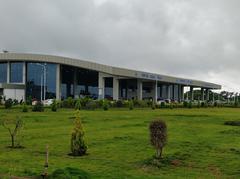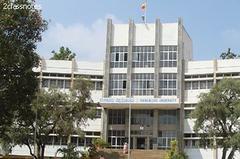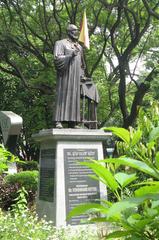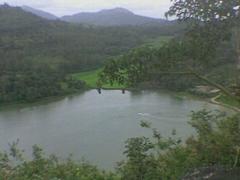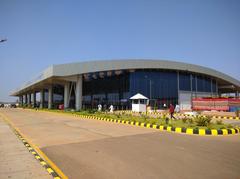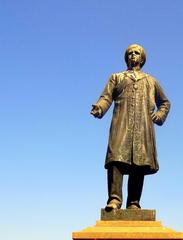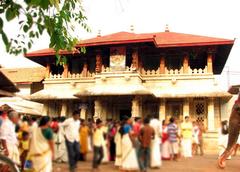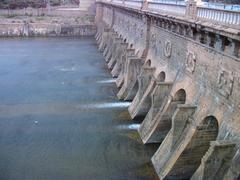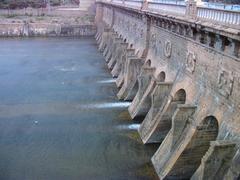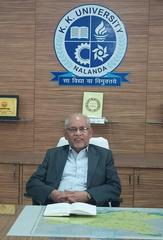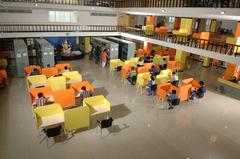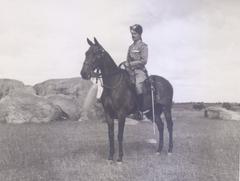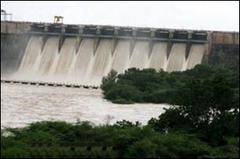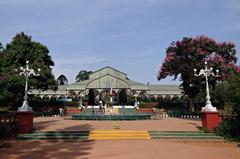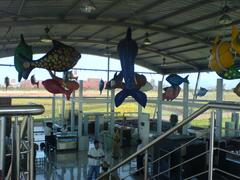
Kali Masjid Visiting Hours, Tickets, and Historical Guide in Karnataka and Maharashtra, India
Date: 04/07/2025
Introduction
Kali Masjid is a name shared by several historically significant mosques across India, most notably in Lakshmeshwara (Karnataka), Bidar (Karnataka), and Jalna (Maharashtra). Each of these monuments stands as a testament to the region’s rich Islamic heritage, architectural innovation, and the enduring spirit of religious and cultural coexistence. This comprehensive guide delves into the history, architecture, visiting information, and practical tips for each site, making it an essential resource for travelers, historians, and spiritual seekers.
Table of Contents
- Introduction
- Historical Background
- Visiting Kali Masjid: Practical Information
- Socio-Religious and Cultural Significance
- Preservation and Community Engagement
- Frequently Asked Questions (FAQs)
- Summary and Final Tips
- References
Historical Background
Lakshmeshwara: Early History & Islamic Influence
Lakshmeshwara, historically known as Huligere or Puligere, has been a prominent cultural and religious center for centuries. It flourished under the Chalukya dynasty, with architectural marvels like the Someshwara temple complex and Jain basadis gracing the landscape (Laxmeshwar History). In the 16th and 17th centuries, the Adilshahi dynasty of Bijapur introduced significant Islamic architectural influences, resulting in the construction of the Kali Masjid in 1617 CE by Ankush Khan, a commander of Bijapur. The mosque is renowned for its Indo-Saracenic style, featuring tall minarets, a large semicircular dome, dravidian-style ceiling chains, and a fortress-like entrance.
Bidar: Barid Shahi and Bahmani Legacy
Bidar, once the capital of the Bahmani Sultanate, became a melting pot of Persian, Turkish, and Deccan influences. The Kali Masjid here, likely built in the early 16th century during the Barid Shahi period, exemplifies Indo-Islamic architecture with its black stone façade, incomplete minarets, and a dome inspired by North African mosques (Wikipedia: Kali Masjid, Bidar). The mosque’s design and construction reflect both a cosmopolitan past and the Barid Shahis’ commitment to art, learning, and religious life (Travelothon: Religious Places in Karnataka).
Jalna: Nizam Shahi and Deccani Architecture
In Jalna, Maharashtra, the Kali Masjid (also known as Jumma Masjid) was built in 1557 AD by Jamshed Khan. This mosque is celebrated for its distinctive black stone construction, lotus-carved domes, and harmonious blend of Persian, Central Asian, and indigenous Indian styles (TourMyIndia: Top Tourist Attractions Jalna). The mosque complex features a walled compound, an arcade, sarai (courtyard for travelers), a large ablution tank, and a hammam, all exemplifying Deccani architectural brilliance.
Visiting Kali Masjid: Practical Information
Lakshmeshwara
- Location: Central Lakshmeshwara, North Karnataka (Laxmeshwar History).
- Visiting Hours: 6:00 AM – 8:00 PM daily (may vary during festivals; check locally).
- Tickets: No entry fee.
- Getting There: Nearest city is Hubli (60 km); accessible by road and rail; KSRTC bus stand nearby.
- Accessibility: Some uneven flooring; assistance may be needed for those with mobility challenges.
- Nearby Attractions: Someshwara Temple, Jain Basadis, Ankushkhan Darga.
- Best Time to Visit: October–March for pleasant weather and optimal photography conditions.
Bidar
- Location: Southwest of Bidar Railway Station in Karnataka (Wikipedia: Kali Masjid, Bidar).
- Visiting Hours: 6:00 AM – 8:00 PM daily.
- Tickets: Free entry; guided tours available via local operators.
- Getting There: Easily accessible by auto-rickshaw or taxi from the railway station.
- Accessibility: Pedestrian-friendly historic quarter; limited ramp access.
- Best Time to Visit: Early mornings or late afternoons for photography.
- Special Events: Ramadan and Eid prayers attract large gatherings.
- Cultural Note: Observe modest dress and respect religious activities.
Jalna
- Location: Court Road, Old Jalna, near Urdu High School, Guru Ganesh Nagar, Maharashtra (TravelTriangle).
- Visiting Hours: 7:00 AM – 6:00 PM daily; busiest during prayer times, especially Fridays and Eid (TripHobo).
- Tickets: No entry fee; donations for maintenance are welcome.
- Getting There: 3 km from Jalna Railway Station; 60 km from Aurangabad Airport; taxis and auto-rickshaws available.
- Accessibility: Mostly ground-level; uneven stone floors; no dedicated wheelchair facilities.
- Facilities: Limited on-site amenities; nearby hotels and restaurants available.
- Nearby Attractions: Jalna Fort, Shree Ganesh Temple (Rajur), Moti Bagh, Jamb Samarth.
- Best Time to Visit: November–February for pleasant weather.
Socio-Religious and Cultural Significance
All three Kali Masjids continue to serve as active centers of worship and community life, reflecting the pluralistic fabric of their respective regions. In Lakshmeshwara, the mosque’s proximity to Hindu and Jain sites highlights centuries of peaceful coexistence. In Bidar, the mosque remains a symbol of religious tolerance and cosmopolitan identity, with its architecture and community activities fostering interfaith dialogue. Jalna’s Kali Masjid, similarly, is both a spiritual hub and a cultural landmark, especially during major Islamic festivals.
Preservation and Community Engagement
Local communities and heritage organizations in each city play a crucial role in preserving these mosques, ensuring their structural integrity and cultural relevance. Visitors are encouraged to respect the sanctity of these sites, support conservation initiatives, and engage responsibly with local traditions.
Frequently Asked Questions (FAQs)
Q: What are the visiting hours for the Kali Masjids?
A: Generally, 6:00 AM to 8:00 PM for Lakshmeshwara and Bidar; 7:00 AM to 6:00 PM for Jalna. Visiting hours may vary during festivals.
Q: Is there an entry fee or ticket required?
A: No, all three mosques are free to enter.
Q: Are guided tours available?
A: Guided tours are offered locally in Bidar and occasionally in Jalna; inquire at local tourism offices or near the sites.
Q: Is photography allowed?
A: Yes, but always ask for permission before photographing worshippers or during prayer times, and avoid flash in prayer halls.
Q: What is the best time to visit?
A: October–March for Lakshmeshwara and Bidar; November–February for Jalna. Early mornings and late afternoons are best for photography and avoiding crowds.
Q: What should visitors wear?
A: Modest attire is required; women should cover their heads, and everyone should remove shoes before entering prayer halls.
Summary and Final Tips
Exploring the Kali Masjids of Lakshmeshwara, Bidar, and Jalna provides an immersive journey through India’s layered history and vibrant cultural traditions. Each mosque is a living monument—showcasing unique architectural styles, serving as centers of active worship, and embodying centuries-old traditions of religious coexistence and community identity. Respectful, responsible tourism—supported by local guides and digital resources like the Audiala app—ensures a meaningful and enriching experience. Combine your visit with nearby attractions, observe proper etiquette, and immerse yourself in the diverse heritage these mosques represent.
References
- Laxmeshwar History
- A Concise History Of Karnataka
- Tourism of India: Best Historical Monuments of Karnataka
- Wikipedia: Kali Masjid, Bidar
- Travelothon: Religious Places in Karnataka
- Karnataka Tourism: Monuments in Bidar
- TourMyIndia: Top Tourist Attractions Jalna
- TravelTriangle: Places to Visit in Jalna
- TripHobo: Kali Masjid Jalna
- Wikipedia: Kali Masjid, Jalna



